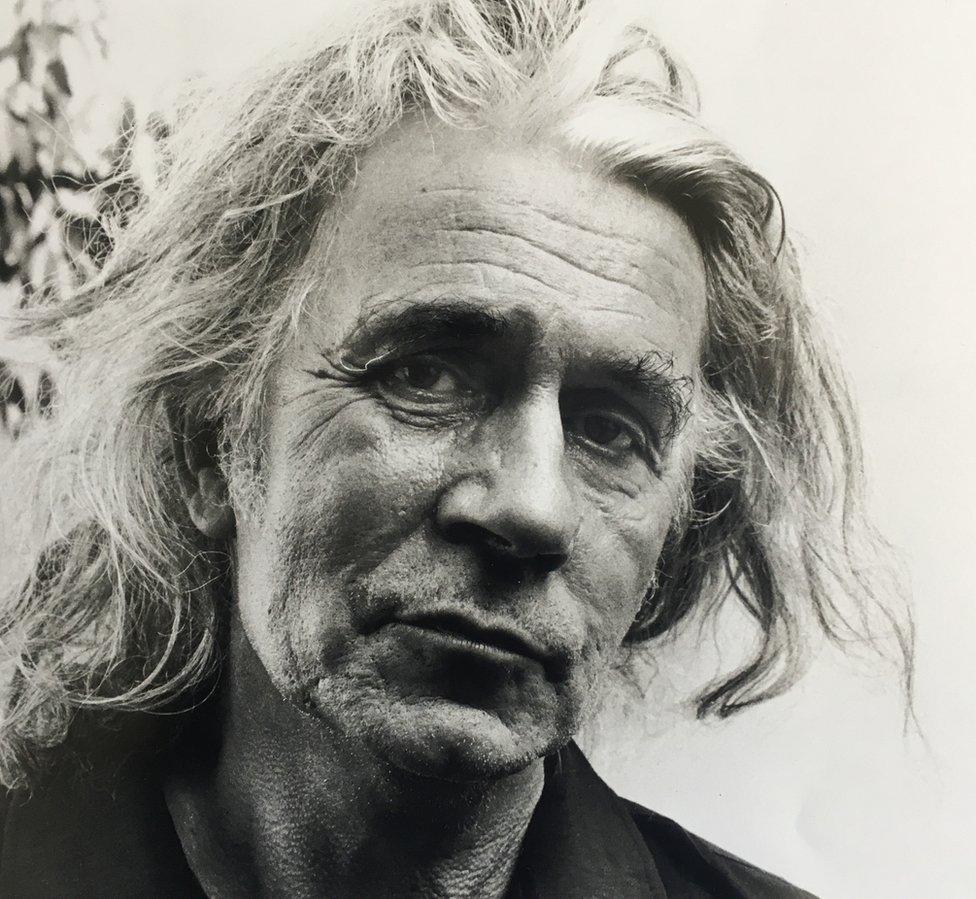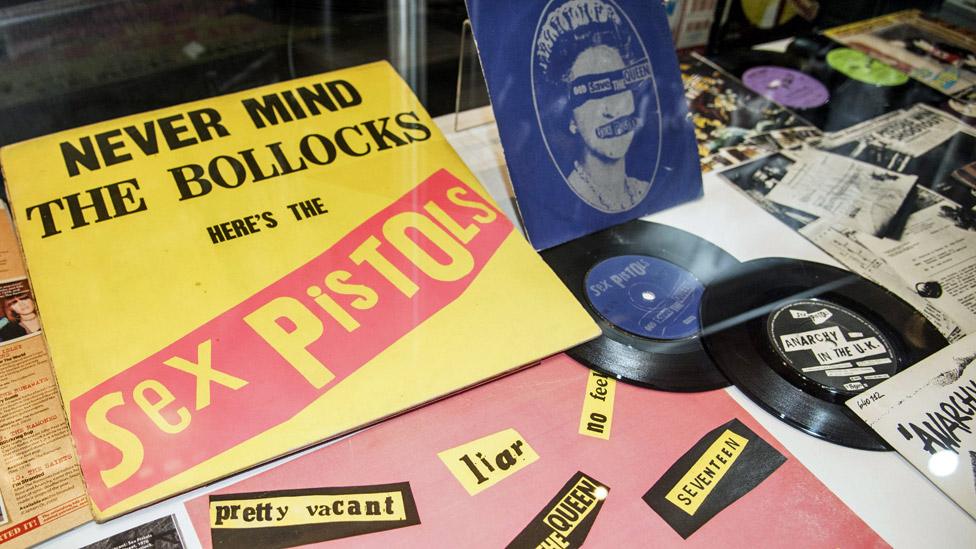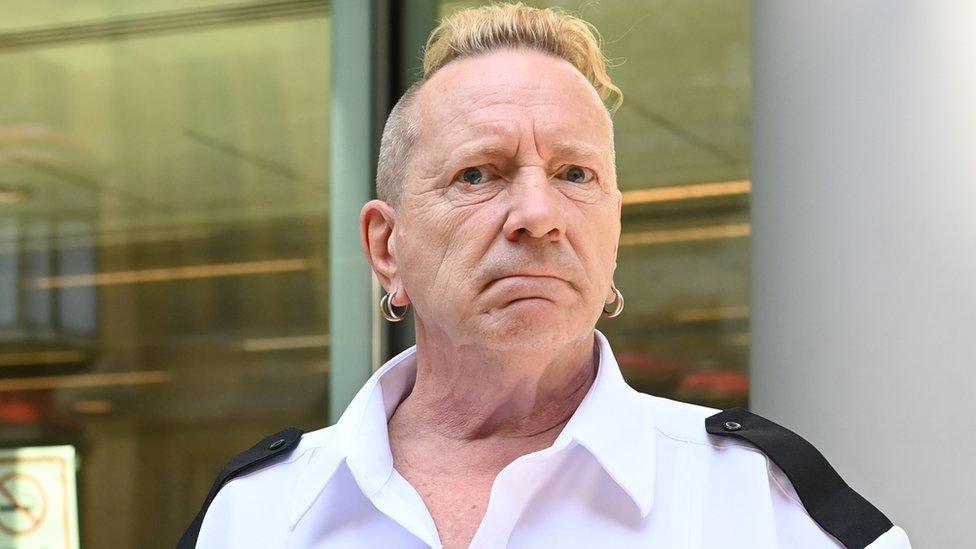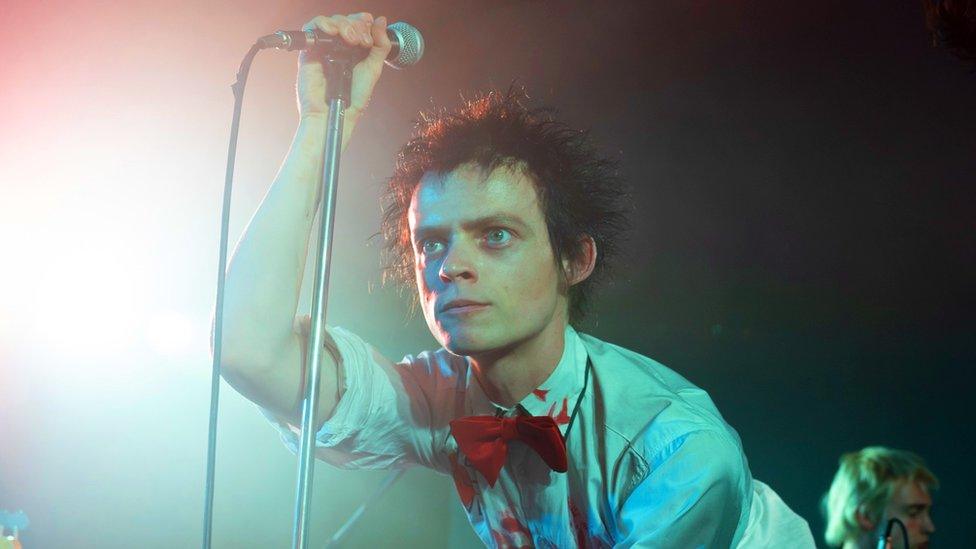Jamie Reid: Punk artist behind Sex Pistols record covers dies at 76
- Published

Reid designed the artwork for several of the Sex Pistols' hits, including God Save The Queen
Jamie Reid, the artist best known for creating the Sex Pistols' famous record covers, has died at the age of 76.
Reid designed the artwork for the punk band's releases like God Save the Queen and Anarchy in the UK in the 1970s.
The God Save the Queen cover became one of the defining images of the era, with lettering pasted on top of a photo of the monarch and the union jack flag.
His gallerist confirmed to BBC News that Reid died on Tuesday, adding that he leaves behind an "enormous legacy".
The John Marchant Gallery described him as an "artist, iconoclast, anarchist, punk, hippie, rebel and romantic", adding: "Jamie leaves behind a beloved daughter Rowan, a granddaughter Rose, and an enormous legacy".

The John Marchant Gallery, which announced his death, said Reid (pictured) left behind an "enormous legacy"
On Instagram, Rowan Reid wrote, external: "I lost the most important man in my life yesterday, to say I'm heartbroken is an understatement!
"Thank you so much Dad for everything you've taught me over the years, when ever I see a wild flower or a robin red breast I'll think of you and all the wonders you taught me about nature and our beautiful earth.
"I'll miss you so much, always and forever! Until we meet again."
Paying tribute, author Jon Savage, who previously worked with Reid, posted, external: "His ability to render complex ideas in eye catching visuals was their perfect accompaniment."

Some of Reid's work was featured as part of an auction of Sex Pistols memorabilia at Sotheby's in London last year
Born in London in 1947, Reid studied at Wimbledon Art School and later Croydon Art School, where he met the Sex Pistols' future manager Malcolm McLaren.
In the early 1970s, Reid started using his distinctive ransom note style - with individual letters appearing as if they had been cut out separately from newspaper headlines - while working for radical paper The Suburban Press.
"We couldn't really afford things like Letraset, so it seemed natural to cut things out and do collage, to save money," he said.
After moving to the Outer Hebrides, Reid moved back to London after receiving a telegram from McLaren asking his old friend to come to work on designs for his new band.
Printers' protest
He put his lettering on top of a tattered union jack for the cover of the Sex Pistols' 1976 debut single Anarchy in the UK.
Its follow-up, God Save the Queen, featured a defaced Cecil Beaton photo portrait of Queen Elizabeth II, and captured a mood of anti-establishment dissent when punk coincided with the monarch's Silver Jubilee.
The sleeve's platemakers were so offended by the image that they initially refused to print it, according to the V&A Museum, external, which bought Reid's archive in 1981.
The song was controversially kept off the number one spot, and its cover proved so inflammatory that Reid had his leg broken by a gang while walking down a street wearing a T-shirt bearing the design.
However, in 2001 it was named the greatest record cover of all time by Q magazine.

Reid's work often resembled a ransom note, with letters looking as if they had been cut out of newspaper headlines
Reid's Décollage-style work also featured on the lurid yellow and pink cover of the band's debut album Never Mind the Bollocks, Here's the Sex Pistols; as well as singles like Pretty Vacant and Holiday in the Sun.
He did not want to just be associated for his work with the punk band, though.
Brought up by parents who took him on anti-nuclear and anti-apartheid marches, his other work combined activism and spirituality.
"My grandfather and Scottish father were Druids, and that was instilled in me alongside a socialist and anarchic background," he said.
'More relevant than ever'
He created posters and designs to support causes ranging from the Occupy movement, Extinction Rebellion, Pussy Riot, poll tax demonstrations and Iraq war protests.
"I believe that you can actually change things," Reid said in one of his final interviews this May, external.
"People might go in for the nostalgia but they will also see how my work can be overly political and slightly spiritual. It's more relevant now that it's ever been."
He also produced a range of colourful abstract works inspired by his Druidic heritage.
Reid's pieces are held in major institutions such as Tate Britain, New York's Museum of Modern Art and Houston's Museum of Fine Art.
- Published23 August 2021

- Published28 May 2022

- Published7 March 2023
